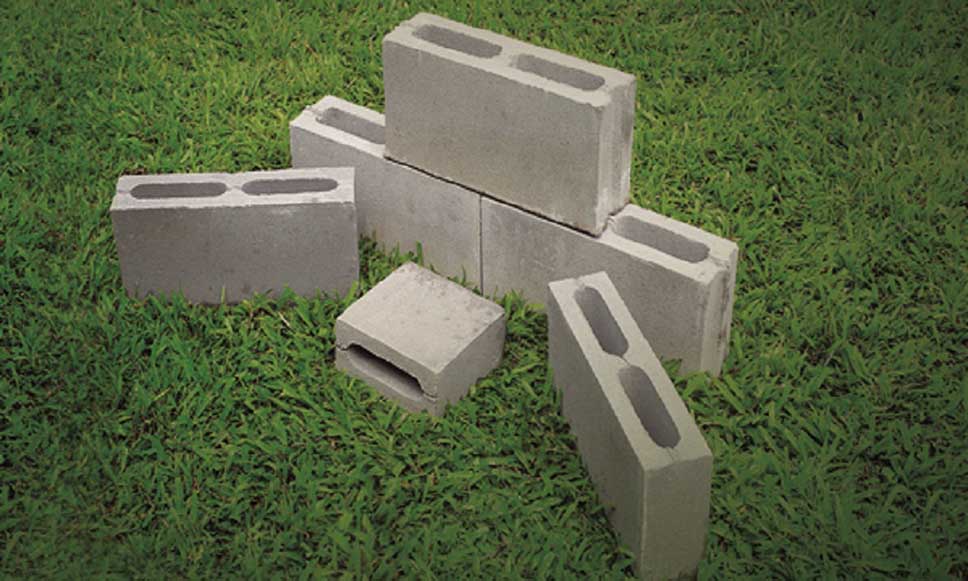Concrete brick are a popular choice in the construction industry due to their durability, versatility, and ease of maintenance. They have been used for centuries in various building projects, from residential homes to large commercial structures. This article will explore the composition, manufacturing process, advantages, and various uses of concrete bricks, as well as their environmental impact and future in the construction industry.
Composition and Manufacturing Process
Concrete bricks, also known as cement bricks or blocks, are primarily composed of cement, water, and aggregates, such as sand, gravel, or crushed stone. These components are combined in specific proportions to create a durable and strong material. The manufacturing process involves mixing the ingredients to form a concrete paste, which is then poured into molds to shape the bricks. Once molded, the bricks undergo curing, which is a process where they are allowed to harden and gain strength. This is typically achieved through hydration, where the water in the mixture reacts with the cement to form calcium silicate hydrate (C-S-H), the substance that gives concrete its strength.
There are two primary methods for manufacturing concrete bricks: wet casting and dry casting. Wet casting involves pouring a liquid mixture of concrete into molds, while dry casting uses a more solid, less liquid concrete mixture, which is compressed into molds. Each method offers distinct benefits and can be used for different types of projects depending on the desired characteristics of the final product.
Advantages of Concrete Bricks
- Durability and Strength: One of the primary benefits of concrete bricks is their durability. These bricks are resistant to weathering, pests, and fire, making them ideal for use in a variety of climates and environments. Concrete bricks also have excellent load-bearing properties, which makes them suitable for both low-rise and high-rise buildings. Additionally, they can withstand extreme weather conditions, including heavy rains and freezing temperatures, without compromising their structural integrity.
- Energy Efficiency: Concrete bricks provide excellent insulation properties. Their dense structure helps to maintain a stable indoor temperature by reducing heat transfer. This means that buildings made with concrete bricks tend to be more energy-efficient, requiring less heating in the winter and less cooling in the summer. This can lead to significant energy savings over time, making concrete brick buildings an attractive option for sustainable construction.
- Low Maintenance: Concrete bricks are incredibly low-maintenance. Unlike wood or other building materials, concrete does not rot, warp, or require regular painting. This makes concrete bricks an excellent long-term investment, as they require minimal upkeep. Additionally, they are easy to clean, making them ideal for both residential and commercial properties.
- Versatility: Concrete bricks come in a wide range of shapes, sizes, and colors, offering flexibility in design. This versatility makes them suitable for a variety of architectural styles, from traditional to modern. They can be used in both load-bearing and non-load-bearing walls, as well as in landscaping applications, such as retaining walls, garden paths, and patios.
- Cost-Effectiveness: Concrete bricks are relatively inexpensive compared to other building materials, such as natural stone or high-end masonry. Their cost-effectiveness, combined with their durability and low maintenance requirements, makes them a popular choice for both large and small construction projects. Furthermore, the manufacturing process for concrete bricks is highly efficient, which helps to keep costs down.
Uses of Concrete Bricks
Concrete solid Block have a wide range of applications, from residential homes to large commercial projects. Some of the most common uses include:
- Residential Construction: Concrete bricks are often used in the construction of homes and residential buildings. They provide strength and durability while offering a clean, modern aesthetic. Many homeowners also choose concrete bricks for their fire-resistant properties, ensuring the safety of their property in case of fire.
- Commercial Buildings: In commercial construction, concrete bricks are used for everything from office buildings to shopping centers. Their strength and versatility make them suitable for large-scale projects, while their energy-efficient properties can help to reduce operating costs for businesses in the long term.
- Retaining Walls and Landscaping: Concrete bricks are commonly used for building retaining walls and other landscaping features. Their durability and ability to withstand pressure make them an excellent choice for creating stable, long-lasting outdoor structures. Additionally, their versatility allows for creative design possibilities in garden and outdoor spaces.
- Paving and Pathways: Concrete bricks are also used for paving roads, walkways, and driveways. Due to their strength and resistance to wear and tear, they can handle heavy traffic and harsh weather conditions. Furthermore, they provide a sleek, uniform appearance that is aesthetically pleasing.
Environmental Impact
While concrete bricks are durable and energy-efficient, they are not without environmental concerns. The production of cement, one of the primary ingredients in concrete, is a major source of carbon emissions. Cement manufacturing accounts for approximately 8% of global carbon dioxide emissions, making it a significant contributor to climate change.
To address these environmental concerns, researchers and manufacturers are exploring more sustainable alternatives to traditional concrete. For example, the use of recycled aggregates, such as crushed concrete from demolished buildings, can reduce the need for virgin materials and decrease the environmental impact of concrete production. Additionally, the development of low-carbon cements, such as those made with alternative materials like fly ash or slag, has the potential to significantly reduce the carbon footprint of hollow Block.
Conclusion
Concrete bricks have long been a staple of the construction industry due to their strength, durability, and versatility. From residential homes to large commercial buildings, they offer a cost-effective and energy-efficient solution for a variety of construction needs. While their environmental impact is a concern, ongoing research and innovation in sustainable building materials are paving the way for a greener future in construction. As demand for eco-friendly and energy-efficient solutions grows, concrete bricks will continue to play a vital role in shaping the built environment.

